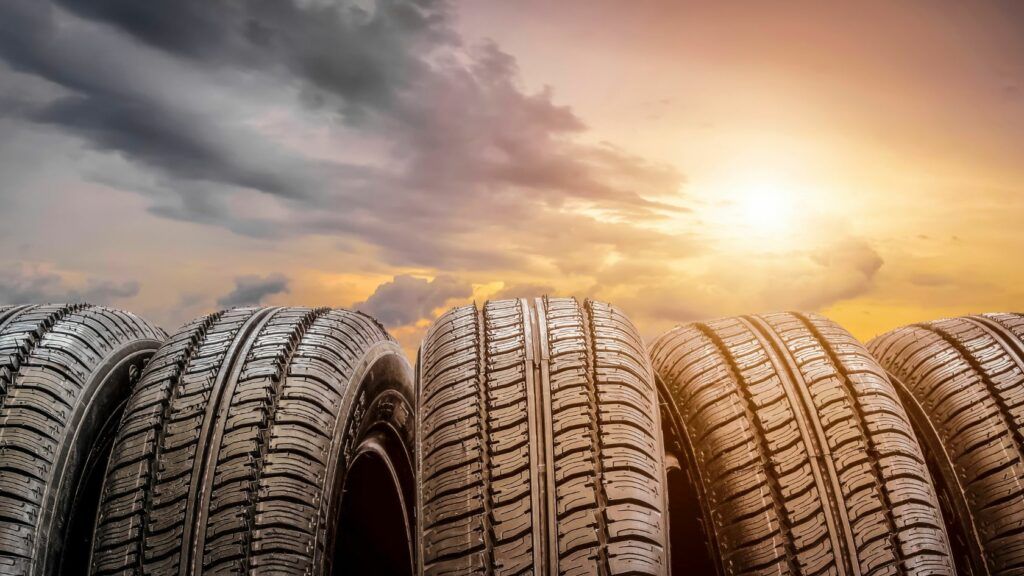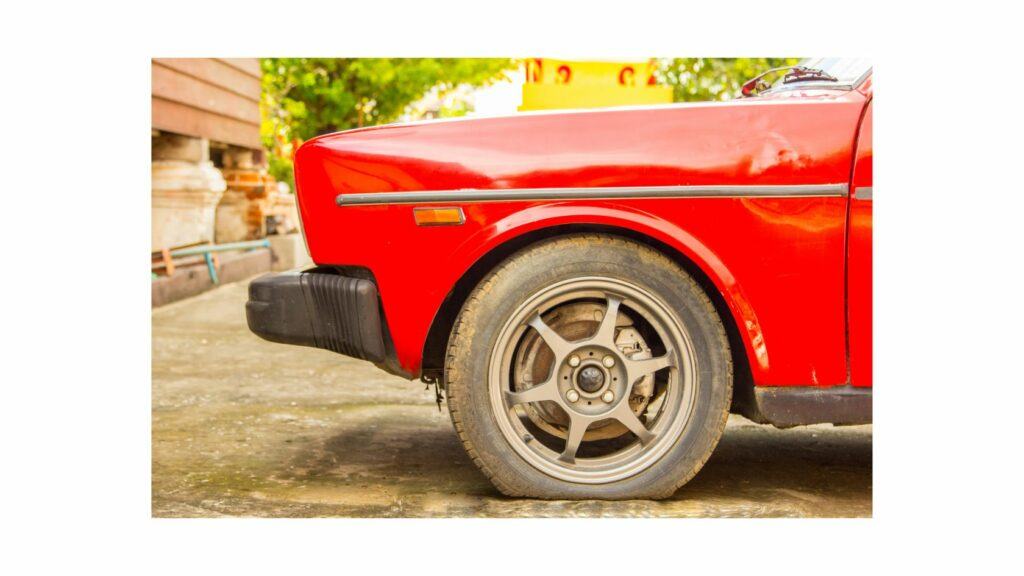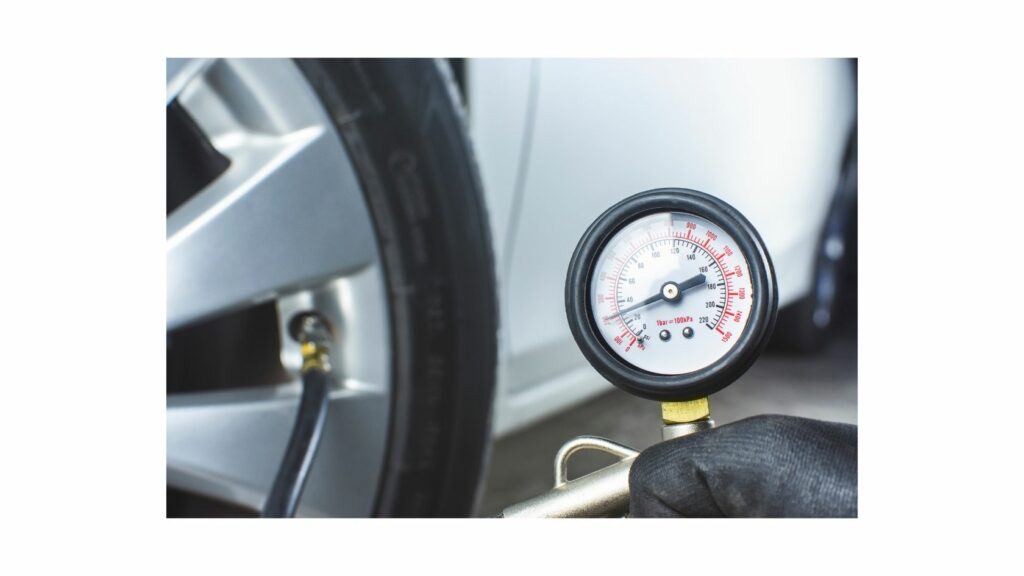
It is a known fact that a car needs more cooling substances to withstand extremely hot conditions. But what about the tires? Do tires need more air in hot weather to remain hydrated?
An increase in temperature expands air molecules that demand more pressure from the tires. To maintain the balance and avoid under-inflation proper tire pressure is required time-to-time which is fulfilled by filling some extra air.
What exactly happens inside of tires that demands more air? What are the causes of low tire pressure in summer? What should be the ideal PSI in hot weather conditions? These are some of the questions you will find answers to in this post.
Do tires need more air in hot weather?
Yes, tires do need more air in hot weather due to the air expansion caused by the spreading of air molecules.
In simple words, tires tend to get hotter by running on roads that are burning with extreme heat.
The combination of internal and external heat pushes the air piston to go out of the tires resulting in more air leakage.
In such a situation, tires need to be filled with some extra PSIs to maintain the pressure and avoid tire bursts or accidents.
When we say extra PSIs it doesn’t mean over-inflating the tires. No, you should never over-inflate the tires in any weather whatsoever.
Tire pressure should always be maintained according to the recommended PSI chart provided by the car manufacturer.
What causes low tire pressure in summer?
There are multiple factors for low tire pressure in summer. The primary reason is heat.
During summer with rising temperatures, heat expands the air molecules inside tires which can cause the pressure to drop significantly.

Secondly, the valve stem of the tire is vulnerable to damage with early wear & tear because of the excessive heat that causes leakage of air.
Friction levels are also on the higher side due to the hot summer as the tires continue to rub against the asphalt making them more hotter. This in turn causes wreckage inside tires that gradually begin to lose air.
Another detrimental cause could be the condition of the tires. If the rubber is ill-aged, not maintained, or had multiple instances of punctures it can break down quickly under hot weather conditions.
Tires are already prone to overheating because of intense running, high speeds, bad road conditions, etc. in normal circumstances. When all these reasons are combined with the causes of summer you will notice low pressure in tires.
What PSI should my tires be when hot?
First of all, what is a PSI? PSI stands for ‘pounds per square inch’ calculated to measure the air pressure inside a tire.
To achieve appropriate levels of PSI, the first rule of thumb is to abide by the vehicle owner’s manual for recommended tire pressure.
Ideally, a PSI between 30-35 is recommended by a majority of car manufacturing companies. But it also depends on the specific make and model of a vehicle and the behavior of the temperature of a country/location.
To understand the PSI levels, let’s take an example!
In normal circumstances (cold pressure), a 30 PSI is what you want the tires to run on. When the temperature increases significantly say above 40 degrees it is time to start monitoring the pressure.
An increase in temperature subsequently increases the pressure in tires. It has been observed by the experts that every 10 degrees increase in temperatures fluctuates the pressure in tires by 1 PSI. It could be a raise or reduction but there will be an impact for sure.
Before starting your journey, if the tire pressure is at 28 PSI and you want to drive a long way under the hot sun your obvious target would be to fill the air by 2 PSI to make it 30 PSI.
Taking 30 PSI as a standard level, and with the rise in temperature by 10 degrees the tires are bound to lose air consistently with a combination of causes like friction levels, hot molecules, and over-resistance of rubber.
By the time you complete your journey, the tires will lose air and sit on a deficit of 2-3 PSI.
This means your tires are still underinflated against the recommended PSI of 30 and if you restart your journey without measuring the tire pressure you are actually running on a time bomb that can explode at any time.
So, if you have a nick of filling up air up to 30 PSI under normal conditions, increase the levels by 2-3 PSIs in summer. This will cover the deficit with that extra filling and keep your car tires ready for your next journey.
That being said, there are likely chances of tires getting over-inflated by 2-3 PSI as well in summer. In such cases, it is better to check the tire pressure at regular intervals. If the pressure increases pull them aside for some time to make them cool.

Remember, the act of filling extra air should be performed in contention with the general guidelines of the car manufacturer’s manual, the condition of the tires, traveling distance, the luggage you are carrying, and predicted weather.
By no means you should over-inflate the tires casually as overinflation is one of the potential reasons for tire bursts/explosions. Secondly, in case of pressure increment never try to deflate the air from hot tires.
Both these acts could be hazardous for your vehicle and your health.
Can hot weather cause the tire pressure light to come on?
Yes, you can see the tire pressure lights coming on frequently in the hot weather due to air expansion in the tires.
The indicator is not because of the hot weather but actually because of the multiple causes happening inside of tires that prompt the tire pressure light to come on.
To avoid this, it’s important to check tire pressure regularly. In case the light does come on, use a tire pressure gauge to check the pressure reading and adjust it according to the recommended PSI.
It is always a good practice to monitor the pressure habitually especially if you are planning long drives in summer.
Does higher PSI optimize fuel economy?
Yes, higher PSI can impact positively on fuel economy however, it doesn’t come without risks.
Higher PSI is instrumental in enhancing the power and torque and reduces the amount of energy needed to move a vehicle. At the same time, higher PSI can also lead to engine wear and tear and impact certain components reducing their lifespan.
Higher PSI is very much similar to over-inflating the tires which can blow out with overrunning on damaged roads, and hot weather conditions.
The best solution to achieve better fuel economy and keep the tires in good shape is by following the PSI chart associated with your vehicle to fill the air.
How to prevent tires from overheating in hot summer?
Preventing tires from overheating relies heavily on tire pressure and maintenance in hot summer.
- First of all, make it a habit to glance through all the tires before starting your journey. This should be your normal routine throughout the year but ensure double due diligence in the summer season.
- Next, keep the tires properly inflated. Always check the owner’s manual or the inside of the driver’s door to find the recommended air pressure chart for proper inflation.
- Use a tire pressure gauge to measure the air levels every 2-3 hours of running and carry the gauge with you always when you are driving a long way in hot summer.
- Keep a check on the tire performance. Worn-out tires with damaged tread depth can build up heat quickly posing a major risk of explosion. If you find abnormalities, replace them immediately.
- Avoid long periods of high-speed driving in the hot weather as it contributes to tires becoming too hot. The higher the speed, the higher will be the friction levels generating greater heat resulting in blowouts.
- Overloading is another reason for a tire to catch up with the heat. Beware of the luggage you are taking especially on long routes. More luggage can put more pressure on tires causing them to heat up and blow away.
- Lastly, it is important to keep yourself hydrated in the hot weather by taking regular breaks. The same logic applies to your car and tires. Give them a break every few hours so that they remain hydrated throughout the journey.
Final thoughts
The condition of tires does fluctuate in hot weather. Extreme heat is responsible for increased pressure, air expansion, higher friction, damaged rubber, and wear & tear.
The causes are many but the main solution lies in how you maintain the tires. Without any doubt, proper inflation is very important for a smooth run.
Add to that, timely monitoring and maintenance, replacements, and your own instincts in carrying luggage on long routes.
A tire pressure gauge will come in handy to check the pressure levels and inflate the tires according to recommended PSI.
Don’t drive too fast on bad roads under hot conditions for too long and complete your journey with regular breaks.
If you follow the guidelines and information from this post I am sure your car tires will be healthy, in shape, and always up to serve you for a long time.
